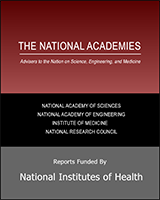NCBI Bookshelf. A service of the National Library of Medicine, National Institutes of Health.
Excerpt
Historically, there has been a strong connection between increasing educational attainment in the United States and the growth in and global leadership of the economy. Consequently, there have been calls—from the College Board, the Lumina and Gates Foundations, and the administration—to increase the postsecondary completion rate in the United States from 39 percent to 55 or 60 percent. The challenge is greatest for underrepresented minorities: In 2006 only 26 percent of African Americans, 18 percent of American Indians, and 16 percent of Hispanics in the 25- to 29-year-old cohort had attained at least an associate degree. The news is even worse in S&E (science and engineering) fields. In 2000, as noted in Gathering Storm, the United States ranked 20 out of 24 countries in the percentage of 24-year-olds who had earned a first degree in the natural sciences or engineering. Based on these data, Gathering Storm recommended efforts to increase the percentage of 24-year-olds with these degrees from 6 percent to at least 10 percent, the benchmark already attained by several countries. But again, the statistics are even more alarming for underrepresented minorities. These students would need to triple, quadruple, or even quintuple their proportions with a first university degree in these fields in order to achieve this 10 percent goal: At present, just 2.7 percent of African Americans, 3.3 percent of Native Americans and Alaska Natives, and 2.2 percent of Hispanics and Latinos who are 24 years old have earned a first university degree in the natural sciences or engineering.
Contents
- The National Academies
- Committee on Underrepresented Groups and the Expansion of the Science and Engineering Workforce Pipeline
- Committee on Science, Engineering, and Public Policy
- Acknowledgment of Reviewers
- Summary
- INTRODUCTION
- BECOMING SCIENTISTS AND ENGINEERS
- CONCLUSION
- Bibliography
- Appendixes
- Appendix A Charge to the Study Committee
- Appendix B U.S. Senate Letter to the National Academy of Sciences
- Appendix C Committee Member Biographies
- Appendix D Agendas for Public Meetings
- Appendix E Recommendations on STEM Education from Rising Above the Gathering Storm
- Appendix F Ingredients for Success in STEM
- Appendix G Baccalaureate Origins of Underrepresented Minority PhDs
- Appendix H An Agenda for Future Research
This study was supported by grants between the National Academy of Sciences and the National Science Foundation, National Institutes of Health, National Aeronautics and Space Administration, Carnegie Corporation of New York, and Otto Haas Charitable Trust #2.
Any opinions, findings, conclusions, or recommendations expressed in this publication are those of the authors and do not necessarily reflect the views of the organizations or agencies that provided support for the project.
NOTICE: The project that is the subject of this report was approved by the Governing Board of the National Research Council, whose members are drawn from the councils of the National Academy of Sciences, the National Academy of Engineering, and the Institute of Medicine. The members of the committee responsible for the report were chosen for their special competences and with regard for appropriate balance.
- NLM CatalogRelated NLM Catalog Entries
- Increasing persistence in undergraduate science majors: a model for institutional support of underrepresented students.[CBE Life Sci Educ. 2015]Increasing persistence in undergraduate science majors: a model for institutional support of underrepresented students.Toven-Lindsey B, Levis-Fitzgerald M, Barber PH, Hasson T. CBE Life Sci Educ. 2015 Summer; 14(2).
- Lifetime earnings patterns, the distribution of future Social Security benefits, and the impact of pension reform.[Soc Secur Bull. 2000]Lifetime earnings patterns, the distribution of future Social Security benefits, and the impact of pension reform.Bosworth B, Burtless G, Steuerle E. Soc Secur Bull. 2000; 63(4):74-98.
- U.S. dental school applicants and enrollees, 2006 and 2007 entering classes.[J Dent Educ. 2008]U.S. dental school applicants and enrollees, 2006 and 2007 entering classes.Okwuje I, Anderson E, Siaya L, Brown LJ, Valachovic RW. J Dent Educ. 2008 Nov; 72(11):1350-91.
- Review Cancer in 15- to 29-year-olds by primary site.[Oncologist. 2006]Review Cancer in 15- to 29-year-olds by primary site.Bleyer A, Viny A, Barr R. Oncologist. 2006 Jun; 11(6):590-601.
- Review American Indians and Alaska Natives--overview of the population.[Public Health Rep. 1996]Review American Indians and Alaska Natives--overview of the population.Rhoades ER. Public Health Rep. 1996; 111 Suppl 2(Suppl 2):49-50.
- Expanding Underrepresented Minority ParticipationExpanding Underrepresented Minority Participation
Your browsing activity is empty.
Activity recording is turned off.
See more...
